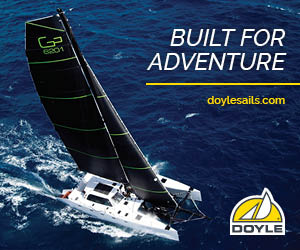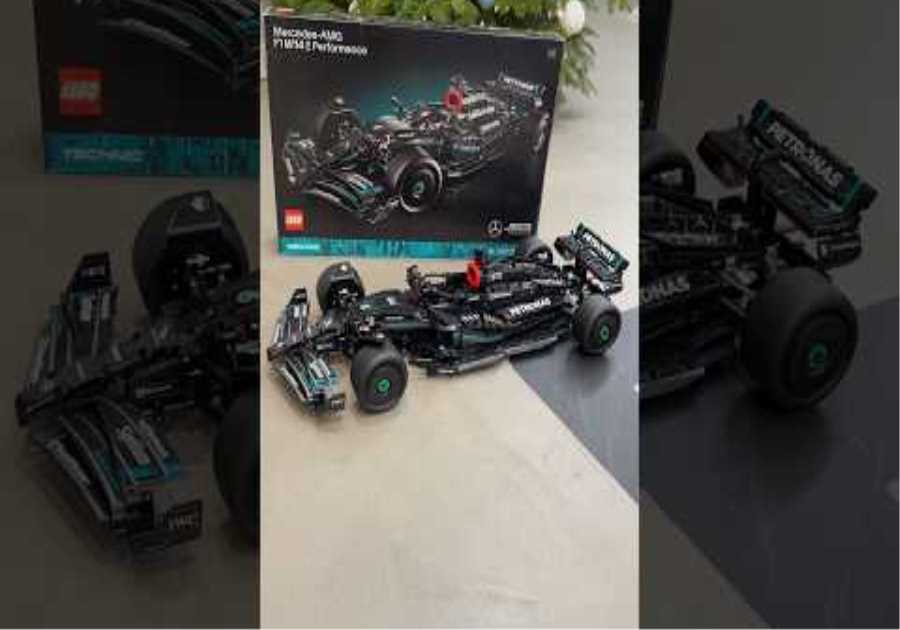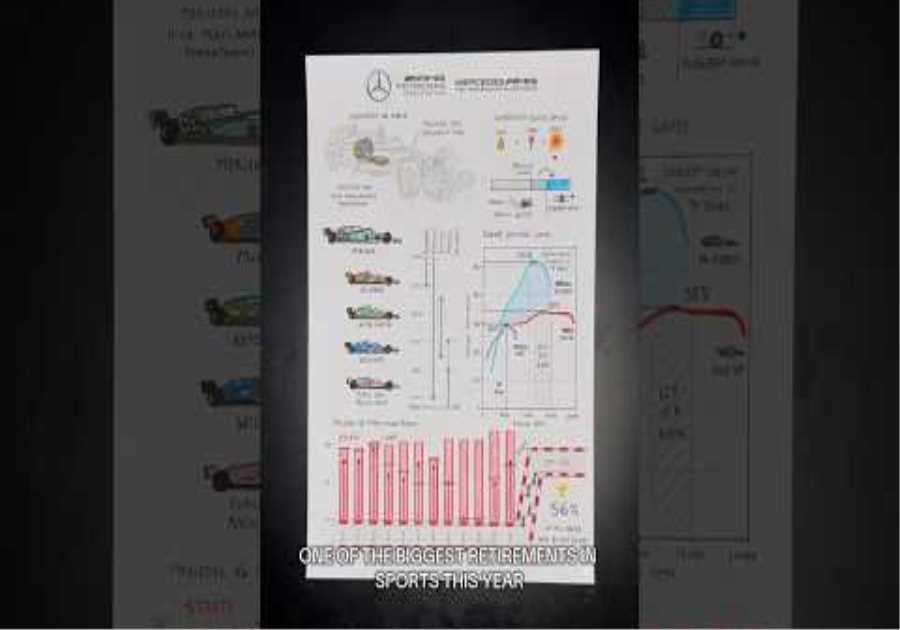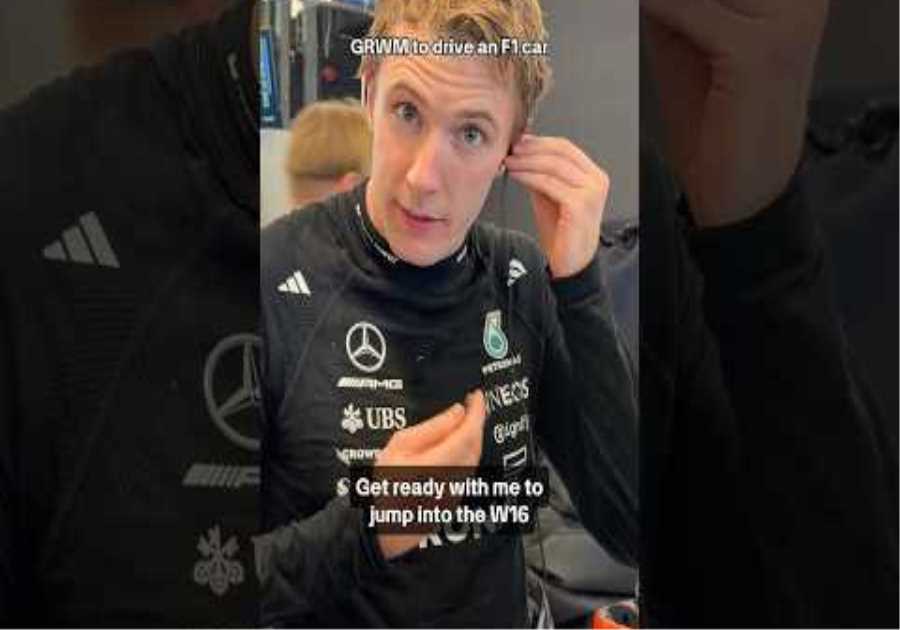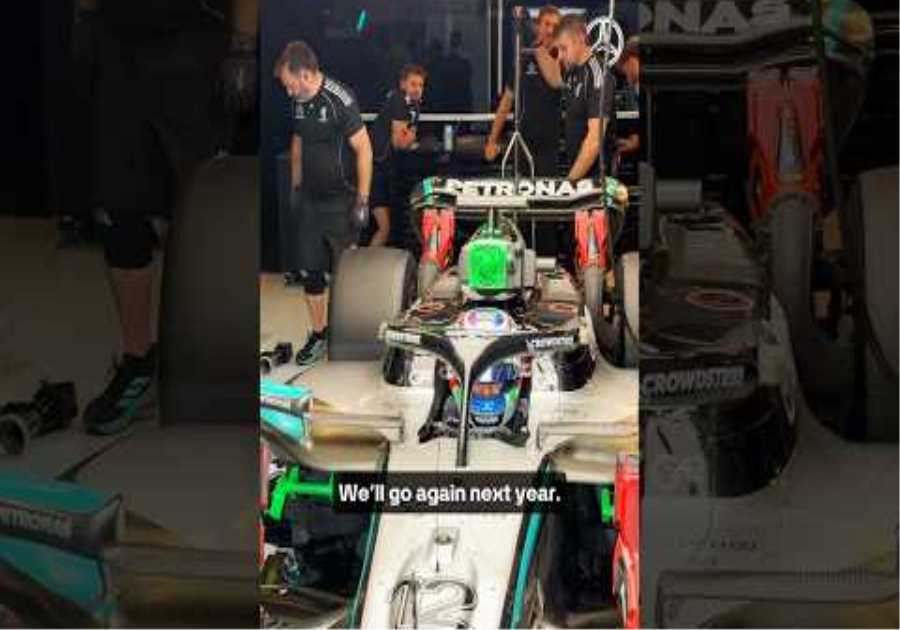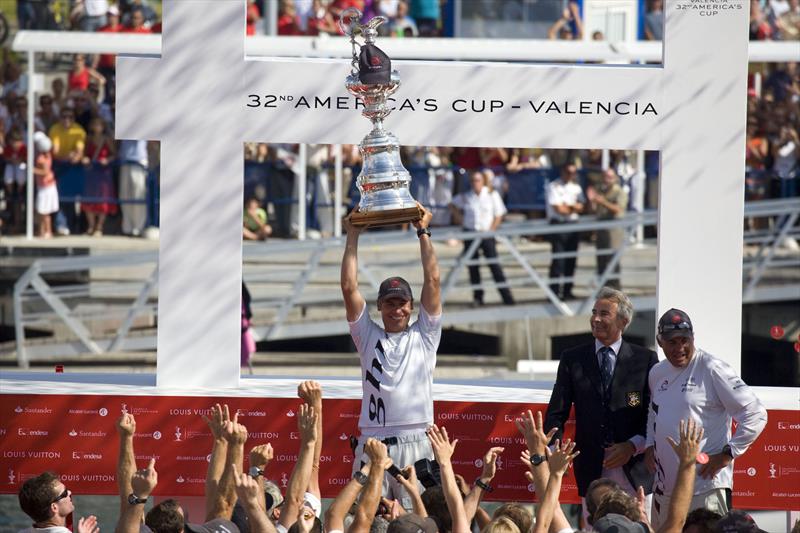
America’s Cup: Alinghi Red Bull Racing will enter the team’s second AC era in the next few weeks
by Richard Gladwell 15 Jul 17:41 PDT
15 July 2022
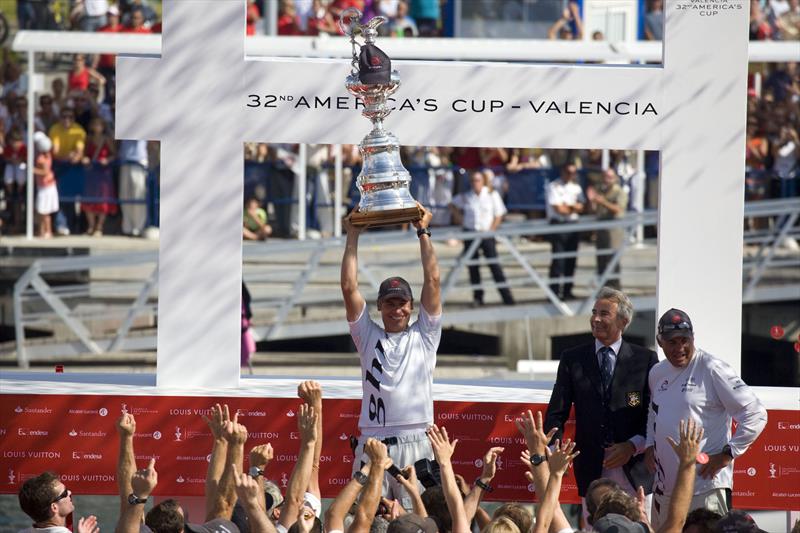
Ernesto Bertarelli holds the America’s Cup aloft 32nd America’s Cup Match by Louis Vuitton Prize Giving Ceremony © ACM 2007/Carlos Lujan


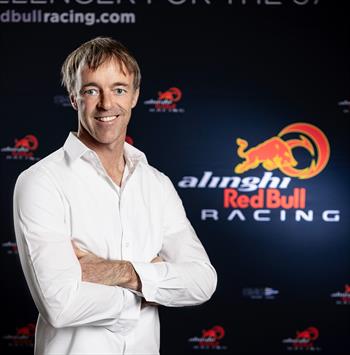
Nils Frei of Switzerland and Alinghi Red Bull Racing Lausanne, Switzerland on February 9, © Samo Vidic / 3MPG for Alinghi Red Bull Racing
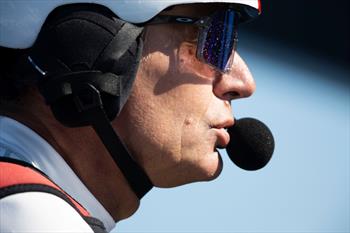
Ernesto Bertarelli – Alinghi Red Bull Racing – June 2022 © Red Bull Content Pool
In the next few weeks Alinghi, twice winners of the America’s Cup, will start sailing after an absence of almost 15 years. Just over two years remain before most prestigious trophy in sailing is contested in Barcelona in September-October 2024.
Strict nationality rules mean that the all-Swiss sailing team, now rebadged as Alinghi Red Bull Racing, will be a radically different entity from that which ripped the heart out of the Kiwi nation in March 2003 on the Hauraki Gulf.
The six New Zealanders, compromising Olympic Gold medalist Russell Coutts and a crew known as the “Tight Five”, who made up the core of the twice America’s Cup winner’s sailing crew, are now gone. They’ve been replaced by an all-Swiss team, chosen for its compatibility as much as its sailing ability. Yves Detrey (43) is the oldest of the current sailing squad and the only one remaining from the 2003 sailing team.
Nils Frei, now coach of the Alinghi Red Bull Racing team, was also a member of the victorious 2003 America’s Cup winning team, along with Brad Butterworth, now a member of the Alinghi Red Bull Racing Board.
Having lost the America’s Cup in the New York Supreme Court-ordered Deed of Gift Match in 2010, team principal Ernesto Bertarelli stepped back from the America’s Cup for the subsequent three Cup cycles. But he didn’t stop and quietly began assembling a new team of Swiss sailors sailing medium-sized multihulls across several classes and circuits, often with Bertarelli, a very accomplished multihull sailor, on the helm.
In hindsight, Bertarelli made a good call. A decade later, a “100%” nationality rule was in force for the 2021 America’s Cup. The rule remains as tight for the 2024 event, permitting – with a couple of exceptions – the use of home-grown teams only.
Bertarelli’s initial crew has now expanded into a 15-strong sailing squad, which has bee regularly competing on the GC32 and TF35 regatta circuits. The Swiss team has won several world championships in the World Sailing recognised international GC32 one design class.
The GC32 World Championships currently underway in Lagos, Portugal marks the end of the beginning for Alinghi Red Bull Racing’s second America’s Cup era.
Later in July, the Alinghi Red Bull Racing shifts into America’s Cup gear and addresses their immediate task of sailing the recently acquired first generation AC75, Te Aihe, from Emirates Team New Zealand.
That process has already started with regular GC32 skipper Arnaud Psarofaghis – who’s been at the heart of the project since it started – sidestepping the 2022 GC32 World Championship having been assigned to AC75 duties. The 33yr old former sailmaker/designer with North Sails says he is with “friends I’ve known since childhood and people I’ve been working with for over 20 years is very exciting.”
“Even if I haven’t necessarily sailed with them, this bond is a great advantage. We understand each other, which will make communication so much easier. And that’s vital, because on board, good communication is key. And off the boat too: we know when one of us is going through a rough patch, how to talk with them, and when… The only thing that counts is performance, and it’s with this in mind that the teams will be put together.”
Psarofaghis stepped in for Emirates Team NZ Skipper Peter Burling, for several SailGP regattas in 2021, while the triple Olympic medalist was defending his Olympic champion’s title at Tokyo2020. The Swiss helmsman notched up the first SailGP race win for the New Zealand flagged team.
Alinghi Red Bull coach Nils Frei says the idea is to grow the eight sailors who will form the AC75 crew out of the 15 in the sailing squad. “It’s never too late to make some changes, but the idea is to have this 15 being the base to finalise the eight.”
“The older guys have been sailing together now for six years. But we go even further back than that. Ernesto never really stopped after the 2010 Cup. We did the Extreme Sailing series for a couple of years on the Extreme 40 and were quite successful.[Winning the circuit four times] The GC32 came along in 2015. We have built a strong GC squad in the last six years, sailing two boats starting this year and winning most of the class events in the world. That group has formed the hard core of the sailing team in the last few years. And of course, we also had the lake sailing with Ernesto.
“Last year’s recruitment process that we started in August in Switzerland, on the TF 35 and the GC 32, continued this winter in Spain. It has taken us a couple of months to finalise the crew, which we announced in June this year.”
“They are all people that we know.,” Frei explains. “Sailing is a small world in Switzerland. We knew some people from our experience with other teams like Realteam and Team Tilt (2018 GC32 world champions) and some Olympic sailors.”
“But we still needed to see how they matched the rest of the group. Their sailing skills are important. But it is even more important just how compatible they are with our group. We are looking at traits like their character and personality, their motivation – the human skills – not just the sailing skill. We have been sailing with that expanding group since the beginning of the year.”
One new team member has been added since the June announcement bringing the total group complement to 15.
The approach is not much different from that of Ernesto Bertarelli over 20 years ago when he assembled a highly talented multi-national team and put them through a team bonding process in a location in the Swiss alps – far from the distractions of the sailing world.
Grunt and Sailing Smarts
The Alinghi Red Bull Racing of 15 sailors has been split into a Driving group and a Power group. The former has come from the sailing squad Bertarelli initiated, and the remainder, who will provide the power for the sailing functions, also come mainly from a sailing background. However, like Emirates Team New Zealand’s AC2017 winning team from Bermuda, the Power squad also includes cyclists and rowers with little competitive sailing experience. Like the Kiwi team’s Olympic Gold medalists in Rowing and Cycling, they put a much harder edge on the fitness routines for the sailing squad.
Many of the Class of 2024 sailors who will contest the next America’s Cup compete in various SailGP teams on the Russell Coutts/Larry Ellison-led circuit – which uses an event-supplied one-design version of the AC50 wingsailed foiling catamaran raced in the 2017 America’s Cup.
Alinghi Red Bull Racing have stayed in the 32-35ft one design foiling catamaran classes. However, several from America’s Cup teams have recently sailed both the SailGP/GC32 and TF35 circuits.
Frei says they have no plans to go into SailGP, despite there being a Swiss entry in that now 11 events 10 team circuit. The Alinghi Red Bull Racing sailing team is run as a single unit, despite running two GC32s on the regatta circuit.
“We don’t have an A and a B team on the GC32 circuit. We had different crews in the first GC32 event compared to the second event. For the Worlds, we’re mixing it around. We will only have one GC32 in the Worlds.
“For us, the GC programme is a team building process, where we try to find which personnel are working well together. And, of course, we have a more experienced Group within the heart of our team. We want these older guys to share their experiences with the younger guys.
We have tried to create that team-building process with the older guys passing their experience on to the younger ones. Then we have to make the group work so everybody can benefit.
“That’s the philosophy for the GC this year. And it’s the same for the Worlds. We want a good event, but the most important thing for us is to keep learning and building the team with that boat.”
The Power group is more America’s Cup focussed.
“On the GC32s, we don’t have any grinder pedestals, bikes, or whatever for doubling the power. On smaller boats, you don’t need the power guys that much, and these people focus on physical preparation. ”
“They need to sail, but they won’t sail that long on the smaller boats. We had them with us already on the GC32s, but that is to check that they feel well on a fast-foiling boat and don’t get seasick. The Power group won’t participate in the GC racing.”
Not shifting to SailGP
One of the key reasons why Alinghi Red Bull Racing has stayed with the GC32 and TF 35 circuits is that the boats are a lot simpler to assemble than the Foiling 50s used in SailGP. There is also a lot more racing, with 20 races being sailed in a GC32 regatta over four days than the five or maybe six races sailed over the two days of a SailGP event.
“We like the GC because it’s a simple boat that doesn’t take too long to put the bolts together. It’s one design. It’s robust, and you don’t lose many sailing days – which is important for us,” Frei explains.
“The good thing about the GC is that you come to an event for four days. It is longer with travelling and everything. In one week, you have quality racing for 20 races.
“That number of races adds a lot of value, in terms of team building and communication on board, which is important for us. The boats are very different in their foiling technology, and it is not the same foil concept as the AC75. But the GC32 is still a fast boat – we have been doing almost 40 knots of boat speed, and our technique has also evolved to do some more upwind foiling.”
“It’s not comparable to an AC boat in terms of upwind foiling, but it’s still a fast boat, and you need to have that smooth communication on fast boats, which is related to precise foiling.
“The onboard comms is not only about heeling but are also about pitch and flying height, and all these things are present when racing the GC32. These smooth reflexes and communication are required in all three-dimensional foiling.
“These skills are required on a GC32 and an AC75, and we must have fast reactions in a short race. You need to be capable of making the right call in a very short time, which is also something you need to be able to do on AC 75. Overall, I think the GC 32 is good for practice for the AC75.”
AC75 now the focus
Once the GC32 Worlds are complete, Frei says the main focus for the Alinghi Red Bull Racing Sailing Team will be sailing the first generation AC75 acquired from current America’s Cup champions Emirates Team New Zealand.
“The main target is to sail the AC 75 as soon as possible. It is not exactly clear when that will happen. The GC32 will probably stay as a training platform when we have time. But it’s not the biggest priority in the coming months, that’s for sure.”
The GC32 allows Alinghi Red Bull Racing to fly under the radar of the Protocol restrictions covering Surrogate yacht(s).
Fortunately, the length of the GC32 and the TF35 is less than the 12metre (39.4ft) minimum length for surrogate yachts stipulated and any longer test boat is prohibited in the America’s Cup 2024 Protocol if it is capable of “producing design or performance information” useful for the “design, construction or sailing of an AC75”.
Frei says the GC32s will not be converted to test boats to give the crew experience with AC75 peculiarities such as double-skinned mainsails.
“Maybe we’ll use them also for other purposes such as guests and media programmes because it’s easy to set up. But that’s not finalised – but we definitely won’t use them as a development platform.
Whole team in Barcelona
One issue that all teams will have to determine for themselves is when to set up in Barcelona [the venue for AC2024].
There are plenty of options, with remote working becoming a more accepted practice. Emirates Team New Zealand is expected to stay in Auckland for the Kiwi summer of 2023/24 and make a move later to Barcelona.
But for the European teams, the 2024 venue is closer to home. The options range from relocating a whole team will relocate there for the entire build-up period and racing (as then New Zealand Challenge did when the whole team “wintered over” in Fremantle in 1986/87. Or if there will be only a sailing and support team plus a few designers. Some may shift only a few months before the Cup, if at all.
“Long term, we want to move to Barcelona as a complete team. As we are a new team, it’s important for us to spend a lot of time together,” says Frei nailing Alinghi Red Bull acing’s colours to the mast.
“Time is always crucial in the America’s Cup, and we need to spend as much time as possible together and not spend too much time on the move. So the goal is to set up in Barcelona quite early and hopefully this year. We want most of us to be active and active at the same place.”
“The physical, face-to-face contact is still important even though all the designers, engineers, and sails teams are working interactively online and sharing screens. It’s funny now because sometimes you have meetings with people working on their computers and sharing screens – even when they are in the same room – because they’re so used to sharing their files, screens and information. So you probably could do a lot of it remotely, but sometimes you need the human side – even if it is only to talk about something other than work. Being in the same location is good for team building and lifting the team spirit.
Frei expects Alinghi Red Bull Racing to be like other big America’s Cup teams – with around 100 people.
F1 hookup
Alinghi Red Bull Rracing is one of two America’s Cup Challenger teams that have formed partnerships with F1 Grand Prix teams. It is seen as a way of putting more horsepower into the America’s Cup design teams and leveraging off the design and engineering know-how within the F1 teams. Some have used the partnership to re-allocate design expertise in response to the FIA’s budget caps on F1 teams.
Tank and wind tunnel testing continues to be prohibited in the America’s Cup, it’s a big ask of the software systems to provide accurate analysis so that correct design decisions are taken. Teams are only allowed to build one new AC75 in this Cup cycle – and design errors will carry a more significant penalty than AC2021 when two new AC75 were permitted.
Frei says he can’t discuss the partnership between the Alinghi Red Bull Racing AC and F1 teams.
“They have a lot of valuable strengths at Red Bull Technologies, and we want to try to benefit from that very impressive and strong design group coming out of Formula One.
We need to be careful not to mix everything up as well, you know, but I think we have the right person, in Marcelino Botin, [Principal designer], to set the right priorities. It’s always important that you don’t get lost in the AC75 design jungle, and it is very important to select the right priorities for what you need.
“I think we have the people to do that and a have a very good collaboration with the Red Bull technologies side.
“Red Bull also has an athlete Performance Centre which is quite impressive. It’s based in Austria, where they have specialists in physical preparation, nutrition, physiotherapy, and mental performance, which they build up for all their sports. We also access to that knowledge which is very valuable.”
Looking forward to AC40
The Defender, Emirates Team New Zealand, is expected to take delivery of the first AC40 – which will be used as a development boat, sailed by the team in America’s Cup Preliminary Events and the Youth and Women’s America’s Cups. The AC40s built by McConaghy Boats in China are allocated to the Defender, the Challenger of Record and then the teams in order of entry.
“We’re hoping to get our first AC40 this winter,” Nils Frei says. “It will be great to sit on that boat which looks very promising. The AC40 is very interesting and definitely a boat that we can sail the same way as maybe we will sail the bigger one. One of the challenges that we have at Alinghi Red Bull Racing is that we don’t have a boat currently sailing that is comparable to the AC75. I guess all the teams are looking for opportunities to sail on comparable boats, and the AC40 will be the first one we can use for that.”
Frei confirmed that Alinghi Red Bull Racing would acquire two AC40s. He says he hasn’t checked the schedule but expects the second one to arrive in the Spring of next year.
Youth and Womens teams
Looking through the Alinghi Red Bull team CVs they are close to being able to field a Youth crew out of the current sailing squad.
The Swiss America’s Cup team will undoubtedly have picked up this week’s Gold medal win in the Nacra 15 catamaran by Axel Grandjean and Noemie Fehlmann (SUI) at the World Sailing Youth Worlds, which have just concluded at The Hague. Fehlmann is the niece of Whitbread Round the World Race winner and sailing great, Pierre Fehlmann who skippered the maxi UBS Switzerland to line honours win in the 1985/86 race.
“After the announcement of the Alinghi Red Bull Racing sailing team, we had a lot of young sailors and women sailors showing some interest in the program. Already the younger people in the squad are starting to sail together. But currently, there is no organised trialling for Alinghi Red Bull Racing. We’re encouraging them to do so. Next year we will get more involved in looking at people who are trying to sail together and build something on their own. We will do a recruitment process next year for these two programmes.
“We have good contacts with the Swiss Olympic team. There are some very good sailors there, but it’s difficult for them to do both programs, with Paris 2024 and AC2024 just three months apart.
“So they must choose between their Olympic campaign and our America’s Cup campaign.
“Switzerland hasn’t been too successful in winning Olympic medals. But lately, we can see that sailing the Olympic classes in Switzerland has become more professional, with better coaches and programmes. And I can see that in the future. Switzerland will be more successful in Olympic sailing as well. I think Alinghi’s story from the past is something that probably helped to develop sailing in Switzerland. We know that some younger guys watching us in 2003 and 2007 went into Olympic sailing, and now they are with us.
“Or younger one were inspired by Alinghi. Some of them started sailing at that time, and now they have graduated to the Olympic classes.
“We know Alinghi’s first America’s Cup era also did something for sailing in Switzerland. And as a result, in response to the AC2024 Nationality Rule, we feel we have the talent in Switzerland to have a full Swiss team on a Cup boat. That is challenging, but it’s absolutely not a problem for us because of the development we have seen in the last few years.”
Frei says they are making progress with the development of a simulator. “There is progress,” he says. “And we know it is an important aspect of a campaign today. And it’s definitely something we want to put a lot of effort into in the future as well. We have a strong team developing it, and we want to treat that as another boat and learn as much as possible on the simulator.”
He says they are getting some help from the Red Bull F1 racing team, where simulators are used extensively. “They have helped a little bit, but it’s been more the sailing team driving the development along with the designers.”
Frei is non-committal on the use of dual helmsmen in the same way Italian Challenger Luna Rossa used Jimmy Spithill and Francesco Bruni in AC2021. “We’ve looked at all kinds of different two helmsmen configurations. But there are a lot of open questions still on the exact role definition you could have on an AC75.
“There are many options on how you want to deal with the crew roles, and that is one part where we would probably go and look at it as well as all the other teams will do. I’m sure each crew configuration always has a plus and minus. We need to understand what’s the best way for us.
Nils Frei says they accept that the new reconnaissance pool of information is now part of the AC2024 game.
He says each team has picked its reconnaissance people (a boat driver and a photographer/recorder). “While it is important to see what the others are doing. But we want to be a step ahead. So it is best to do your own developments, which will be more important than just copying the others. But pooled reconnaissance is now part of the game, and we will play that game.”
“We only know who the guys are from our team. So far, it’s still in the early stages, and the teams are not sailing. But I’m sure they will get organised better in the future when the teams are sailing and then have to announce their nominees. It’s a whole new process.”
Alinghi Red Bull Racing is expected to be one of the first to get sailing in an AC75, having acquired Te Aihe, Emirates Team NZ’s first AC75. Frei says they didn’t get any performance data with the boat, and obviously, they have a steep learning curve to develop their speed to the level of the other teams, who all sailed in AC2021.
“I think it’s important to have one boat that we will be able to sail as we’re a new team and haven’t experienced sailing an AC75 – so it doesn’t matter too much if it’s an older generation boat. For us, the important thing is to just get into it.
